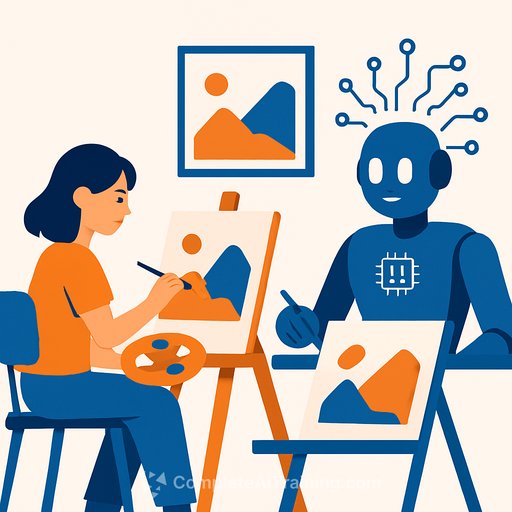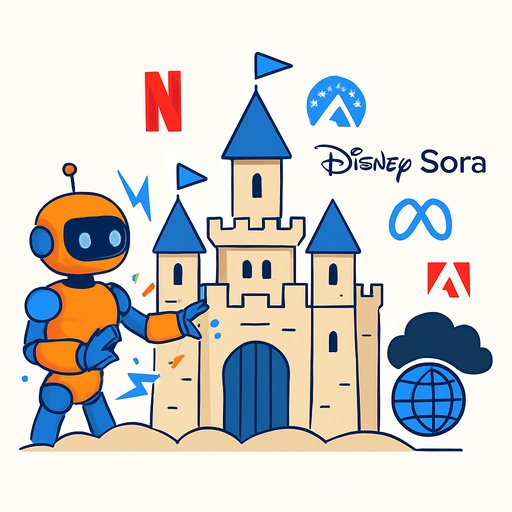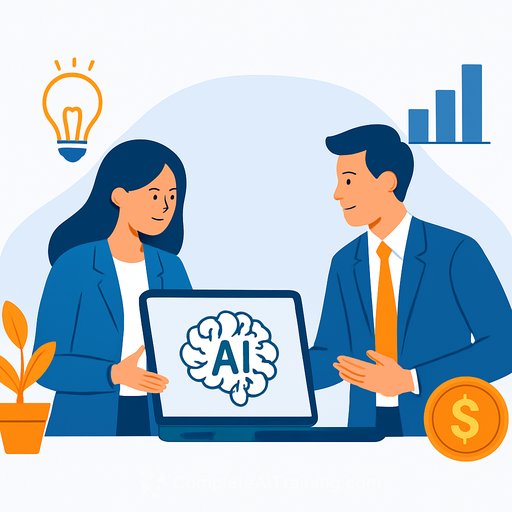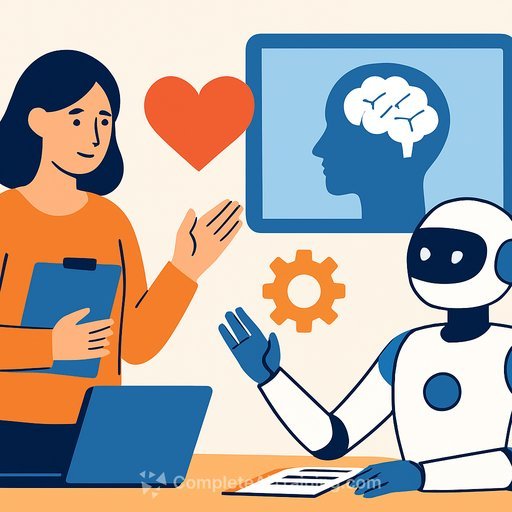Enhancing Art Creation Through AI-Based Generative Adversarial Networks in Educational Auxiliary Systems
Abstract
Creative art education demands interactive, personalized tools that help students develop both aesthetic expression and technical skill. Traditional digital art tools often lack adaptive feedback and require manual input, limiting their usefulness in self-guided or remote learning. This study presents an AI-enhanced educational system powered by Generative Adversarial Networks (GANs) to support art creation, creativity, and engagement.
The system uses a hybrid GAN architecture enabling semantic sketch-to-image transformation, style transfer, and real-time visual feedback. Students co-create digital artwork with the system, which learns their preferences and offers constructive suggestions. Trained on diverse datasets, the model emulates multiple art styles. Testing with 60 undergraduate art students showed a 35.4% improvement in creative output quality and a 42.7% rise in engagement compared to traditional tools. The system also provides explainable visual outputs that encourage reflection and critique, offering a scalable AI-assisted learning framework that supports artistic exploration while preserving creative autonomy.
Introduction
Art education nurtures creativity, expression, and critical thinking but faces challenges adapting to digital environments. While technology offers new avenues for exploration, students often lack timely feedback and adaptive learning tools that encourage divergent thinking. Most digital art software acts as a passive tool, offering little pedagogical support for beginners struggling with technique or confidence.
Generative Adversarial Networks (GANs) have shown promise in producing realistic images, transferring styles, and co-creating visuals with human input. Their dual-network setup allows fine-grained learning of visual features, creating outputs that closely mimic human art.
Educational psychology highlights that creativity grows when learners explore, iterate, and reflect. GANs that generate stylistically diverse, meaningful artwork based on user input can act as valuable partners—stimulating imagination, validating sketches, and showing alternate artistic directions. Yet, their use in formal education remains limited, with most AI art tools focusing on classification or automated generation without interactive feedback aligned to pedagogical goals.
Most existing generative art tools lack real-time interactivity, a key factor in supporting creativity. They often operate in batch mode or require heavy computation, making them impractical for classrooms. There’s a clear need for lightweight, responsive AI systems that integrate with drawing interfaces and support multiple input types like sketches and text prompts.
Creativity is personal and culturally influenced, so AI systems in art education must respect diverse aesthetics and promote inclusivity. This requires curated datasets, interpretable models, and human-centered evaluations. The AI should collaborate—suggesting and enhancing without overshadowing human intention or improvisation.
This study introduces an educational auxiliary system based on GANs that provides adaptive, real-time, and stylistically diverse visual feedback. It supports sketch-to-image transformation, abstract-to-realistic generation, and dynamic style adaptation. The system accepts multimodal inputs and integrates with various digital learning platforms.
Research Objectives and Contributions
This study presents a GAN-powered educational system that boosts artistic creativity and supports interactive learning in visual arts. It blends GANs with real-time sketch-to-image synthesis and multimodal input to act as a dynamic co-creator, encouraging exploration and immediate feedback.
- Designed a modular AI architecture combining semantic sketch-to-image translation, style transfer, and latent feature interpolation for real-time collaborative art creation.
- Developed a pipeline integrating freehand sketches, textual prompts, and style references to produce diverse, relevant art outputs that adapt to user preferences.
- Demonstrated a 35.4% improvement in creative output and a 42.7% increase in engagement compared to traditional tools, validated through a controlled experiment with 60 undergraduate students.
- Included explainable AI components such as attention heatmaps and progressive previews to aid learners and instructors in understanding the model’s decisions.
- Showcased cross-disciplinary and curriculum adaptability, supporting various visual art forms and deployment in both in-person and remote learning with minimal retraining.
Literature Review
AI, especially deep generative models like GANs, is reshaping how creativity is supported in art and design education. GANs excel in sketch-to-image translation, turning simple line drawings into detailed images, which benefits novices needing real-time feedback and confidence building.
Style-based generation models such as StyleGAN2 enable users to explore diverse artistic styles through latent space manipulation. Educational tools that utilize these models help students grasp composition, texture, and color theory by allowing hands-on style blending and evolution.
Co-creative systems encourage interaction between human and machine, adapting outputs based on user input. Such approaches scaffold creative thinking by offering alternatives and augmenting ideas, key for developing originality.
However, many AI art platforms lack educational alignment, scaffolding, and accessibility for beginners. They often function in isolated workflows without integration into classroom management systems or real-time assessment, limiting their usefulness in formal education.
Evaluations typically use metrics like Fréchet Inception Distance (FID) and Inception Score (IS) to gauge image quality but these do not capture educational impact. User engagement, creativity ratings, and learner satisfaction offer complementary insights, showing that dynamic, adaptive systems improve perceived learning outcomes.
Problem Statement
Art education traditionally depends on studio mentorship and manual critique, which may restrict personalized feedback and ongoing creative exploration, especially in remote or digital settings. Digital tools often serve as passive canvases without adaptive features to encourage creativity.
Beginners struggle without exposure to varied styles or feedback. AI in art has been mostly geared toward professional or entertainment uses, with little focus on education. There’s a need for intelligent systems that generate creative content while acting as collaborative learning partners—guiding without dominating and aligning with educational goals.
This research addresses this by developing an interactive, AI-powered auxiliary system using GANs to provide real-time assistance, inspiration, and feedback during the creative process.
Proposed Architecture
System Overview
The architecture is an end-to-end generative framework designed for co-creative learning in visual arts. It accepts multimodal inputs and provides real-time generative feedback. Three core components work together: input encoding, GAN-based generation, and style transfer with personalization. The system offers not only final images but also visual cues like attention maps and previews to support learning. It’s optimized for deployment on GPU-supported educational platforms such as tablets, web apps, and classroom projectors.
LMS Integration and Curriculum Alignment
The system integrates with popular Learning Management Systems (LMS) like Canvas and Moodle, enabling educators to track student progress and give feedback within familiar interfaces. It can be customized to match curriculum standards so instructors can set goals, monitor performance, and provide targeted guidance.
Input Modalities and Feature Representation
Users interact via hand-drawn sketches, textual style or concept descriptions, and optional reference images. Sketches are converted into semantic maps; textual prompts are encoded using transformer models like BERT; style references are processed to extract style vectors. These features are normalized and fused in a shared latent space, allowing the generator to produce outputs aligned with the user’s creative intent. Future updates plan to include audio and gesture inputs to enhance responsiveness.
GAN-Based Generation Module
The core uses a conditional GAN where the generator turns fused latent inputs into images and a discriminator judges output authenticity and alignment. The generator employs a U-Net with skip connections for detail preservation. An auxiliary reconstruction loss ensures pixel-level consistency.
Style Transfer and Personalization
The style transfer module injects style embeddings from reference artworks via adaptive instance normalization, allowing generated images to keep sketch structure while adopting color and texture from chosen styles. Users can change style references dynamically, and the system remembers preferred styles to personalize outputs over time.
Discriminator and Confidence Feedback
The discriminator doubles as a feedback tool, providing confidence scores that reflect image quality and alignment with user input. It also generates class activation maps highlighting regions that influenced its realism evaluation. These insights help learners understand and improve their work.
Loss Functions and Training Objectives
The model optimizes a composite loss balancing realism, content preservation, style fidelity, and diversity. This includes adversarial, reconstruction, perceptual, style consistency, and diversity losses, weighted to achieve visual quality and artistic expression suited for learning.
Real-Time Interaction and User Interface
The user interface is responsive and intuitive, built with web technologies supporting stylus input, drag-and-drop for style images, and live text editing. Sketch strokes stream to the backend, where inference runs under 300ms on modern GPUs, ensuring feedback keeps pace with the creative flow.
Implementation Setup and Performance Metrics
System Environment and Tools
Implementation used Python and PyTorch. The frontend was built with Vue.js and HTML5 Canvas for stylus input. Backend APIs ran on Flask inside Docker containers for scalability. Testing occurred on a system with an NVIDIA RTX 4090 GPU and Intel Core i9 CPU. Inference was accelerated with TensorRT, and experiments tracked using Weights and Biases.
Dataset Description and Preprocessing
The training dataset included over 50,000 paired sketches and style artworks from various sources. Sketches were binarized and resized, with semantic edge maps extracted to enrich structure.
Training Configuration and Hyperparameters
Adam optimizer was used with specific learning rates and batch sizes. Learning rates decayed linearly after defined epochs, and spectral normalization helped stabilize training.
Evaluation Metrics
Quantitative assessment used Fréchet Inception Distance (FID), Inception Score (IS), and Structural Similarity Index (SSIM). System responsiveness was measured by average feedback latency.
Simulations and Results Discussion
Quantitative Performance Evaluation
The proposed system outperformed baseline image-to-image translation models, achieving the lowest FID score and highest Inception Score. This indicates superior visual fidelity and diversity in generated artwork.
Qualitative Visual Outcomes and User Feedback
User studies with students and expert reviews confirmed the system’s effectiveness in producing stylistically aligned and educationally useful artworks. Participants reported higher satisfaction and engagement.
Ablation Study and Component Impact
An ablation study evaluated the impact of each input modality and system component by selectively disabling them and measuring performance drops. This helped identify the critical elements driving quality and user experience.
For those interested in learning more about AI in creative fields, exploring courses on AI tools for generative art can provide valuable insights into practical applications.
Your membership also unlocks:









